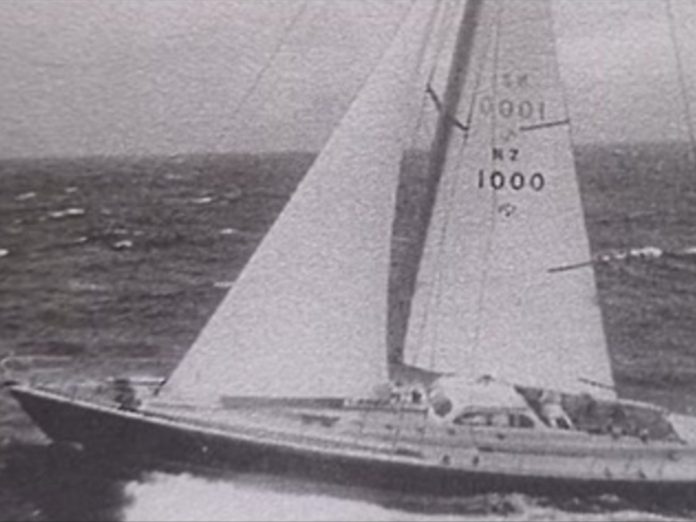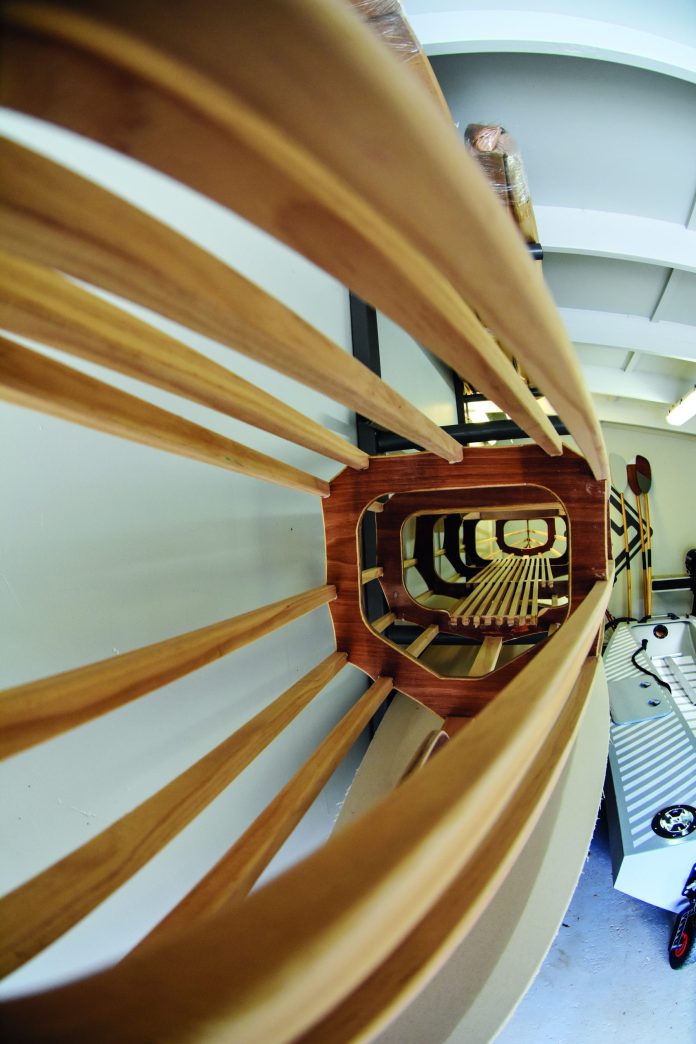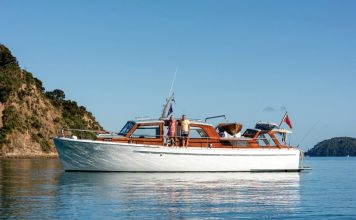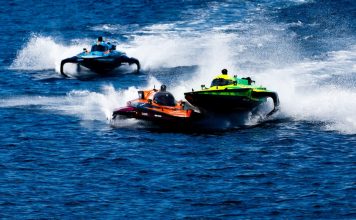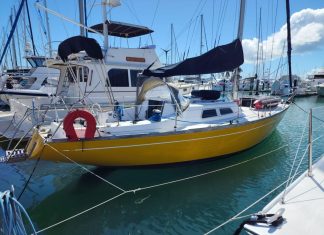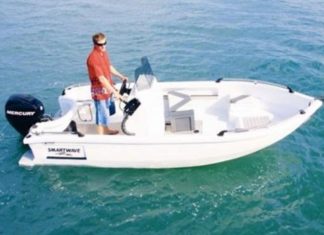Almost every type of boat-use story has some requirement for keeping stuff cool.
A small fishing dinghy may only need a chilly bin to keep the sun off the refreshments or bait for a few hours, whereas a cruising vessel may need to store weeks’ worth of supplies in a deep freezer for extended trips. In between these extremes are launches or larger runabouts that will likely be used for the occasional overnight trip or weekend away. As I rebuild my boat Divecat I am changing her interior layout, from a purely day-boat to a something more suitable for extended family trips. With the change in usage comes a change in the onboard refrigeration requirements.
At the moment the galley is, literally, a blank space and hence I have the opportunity to build in whatever I like. Before I start the joinery work I need to plan out what type of fridge to fit, where to put it, and how big a unit to install. I also needed to know what is required in terms of ventilation and power source. I popped down to my local marine supplier to see what they had in stock, and came away slightly more confused than before I started.

The first, and possibly most important, consideration is what power source to run the fridge off. Options include gaspowered, battery (12V or 24V), and 240V mains, and there are even three-in-one units that can run off all three – gas, battery or mains power. These units can be switched as required to use the most appropriate energy available for the situation. I decided some professional advice was needed before I made an expensive but potentially wrong decision. So I contacted Greg Knight of Auckland-based Fridgetech, which specialises in the sales, service and installation of fridges and freezers for the marine, motor-home and off-grid markets.
First-off, Greg said that he absolutely does not recommend gas-powered fridges for boats. These require specialised ventilation systems sealing the gas combustion area and cooling unit from the inside living area, since they literally have a flame burning all of the time. On the positive side, they are very energy-efficient and a standard 9kg gas bottle can power one of these continuously for several weeks. They also have no moving parts and nothing to wear out, so can operate for decades without problems.
However there is always the risk of the pilot flame going out and gas fumes escaping into the cabin, plus there is the associated carbon monoxide risk. Building in adequate ventilation and taking care of the heat generated are not trivial problems, and Greg says these units are best suited for holiday baches and other off-grid locations that are not being bounced around like a boat.

The second option is 240V mains power, which is of course great if you spend a lot of time on a marina berth where shore power is constantly available. You can also run a trailer boat’s mains-powered fridge at home using an extension lead, to chill the unit right down before unplugging just before you head off. Two-hundred-and-forty volt units have the highest cooling capacity, and larger domestic-sized fridges tend to be of this type. However, these are only really viable out on the water if you have a genset, since running a fridge off a battery and an inverter is hugely inefficient. So, not suitable for my application.
Battery powered is therefore the way to go. This is available for all boat sizes, and fair to say there are probably lots more options available using battery power than all the other types put together. The technology has become very efficient, with smaller units drawing as little as four amps. These units also operate using a compressor that cycles every five or 10 minutes, so they are only drawing that current around 30% of the time. Thus a fridge could draw on average around 1.5 amps per hour, or 36 ampere-hours over a 24-hour period. A reasonable sized house battery could therefore easily cope with a fridge running for an entire weekend, especially when combined with a solar panel on the roof to top the battery up during the day.
And what of the three-in-one fridges, which seem to be the ideal solution? Greg said they were, in general, totally unsuited for use on a boat. Gas-powered fridges work using vapour absorption refrigeration technology, a process developed in 1860 by a French scientist. In this system the coolant is heated up until it becomes a gas and separates into two components, usually ammonia and water. The high-pressure gases are separately cooled back to a liquid, and the high-pressure ammonia feeds into an expansion-chamber cooling system inside the fridge compartment. Afterwards the ammonia and water are recombined before the heating cycle starts again. Google this if you are interested in exactly how it works. The cooling process is quite slow, and a gas fridge may take up to six hours to get fully cold. And they have to remain in a vertical position to function correctly on gas, something that can be a challenge in a boat out on the water.

Importantly, though, the three-in-one units utilise the same technology as a standard gas fridge and simply add extra electric heating elements to vaporise the coolant. Electric heating is not energy-efficient and needs to run all the time. This means that running one of these units off a 12V source will impose a constant power draw of 10 amps or more for even small units, rather than the cycling that occurs in a compressorbased fridge. To achieve a similar cooling capacity will require three to four times as much power consumption compared to a electric-only fridge.
The only real advantage these units do have over batteryonly models is that they also have no moving parts and so they run quieter and should be more reliable over a long period. The installation of a three-in-one is also considerably more complex, even if gas is never going to be connected, due to ventilation considerations to deal with the additional heat created.
Having decided that a 12V battery-powered unit is my best bet (or 24V if I had decided to implement a 24-volt circuit), the next decision was around size and capacity. Greg advised that a front-opening fridge is probably the best option for a weekend-type boat. Top-opening units are less user-friendly, since you need to clear anything off the lid before accessing inside, and items in the bottom of the fridge compartment are hard to reach. On the positive side, they do not lose all their cold air every time the door is opened – onboard freezers are often top-opening to reduce their heat loss and energy consumption.
So, having concluded that a front-opening, battery-powered unit is what I need, the next decision is what size. In my case I will build the galley around the fridge, meaning I can select a suitable standard-sized unit that simply needs a power connection. For unusual spaces or custom installations Fridgetech is able to supply a kit with the compressor and cooling coils ready to be built into a cupboard space. These can be as big or small as you need, and the compressor can be located away from the chilled space. Fridgetech also sells complete kitsets which include the insulating foam and a plastic or stainless-steel liner.


Based on my vessel size and up to eight occupants for a weekend, Knight recommended a 130-litre under-bench unit like the Cruise 130, which has an eight-litre freezer compartment. This unit is 745mm high, so easily fits under a standard bench height. The depth of 505mm also means it does not require very much in terms of cupboard width, although some space around the unit is required for airflow to allow heat to escape.
One other idea, which I may also implement later on, is to put a separate freezer unit out in the cockpit. A top-opening unit can be used much like a chilly bin, and if primed with salt ice it can keep items cold for quite some time even without being turned on. Greg says these are quite popular installed in an island or under a wash-down basin in the cockpit. Since a freezer draws about three times the power of a fridge when it is turned on, this is something that needs additional planning in terms of energy requirements.
Having now decided on the unit I wanted to install, I could begin to design and build my galley layout. I have a large and very solid rimu counter top that I am recycling from a previous home renovation, and decided to go with a U-shaped galley. This maximises the working area while minimising use of floor space. There are several possible locations for the fridge under this counter, each with different opening options, so I shall now trial a few before finalising the design. BNZ











